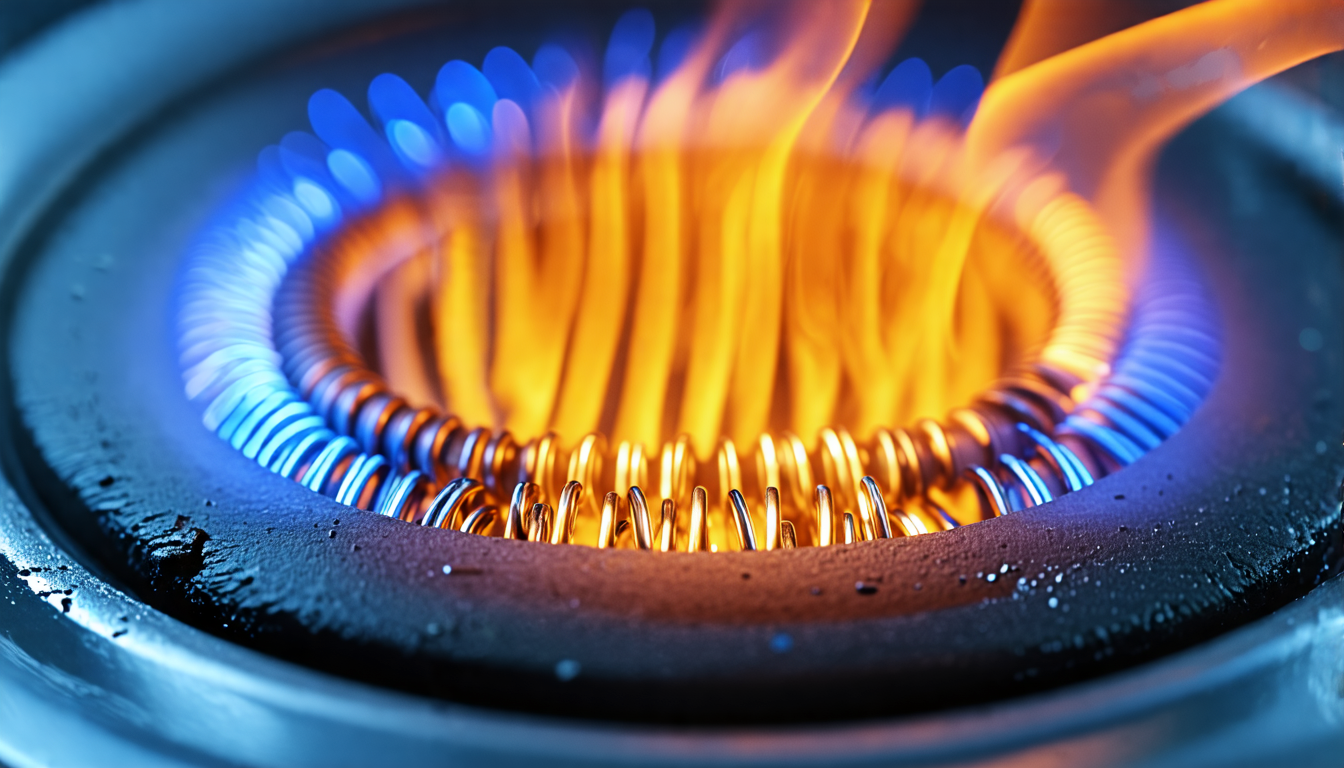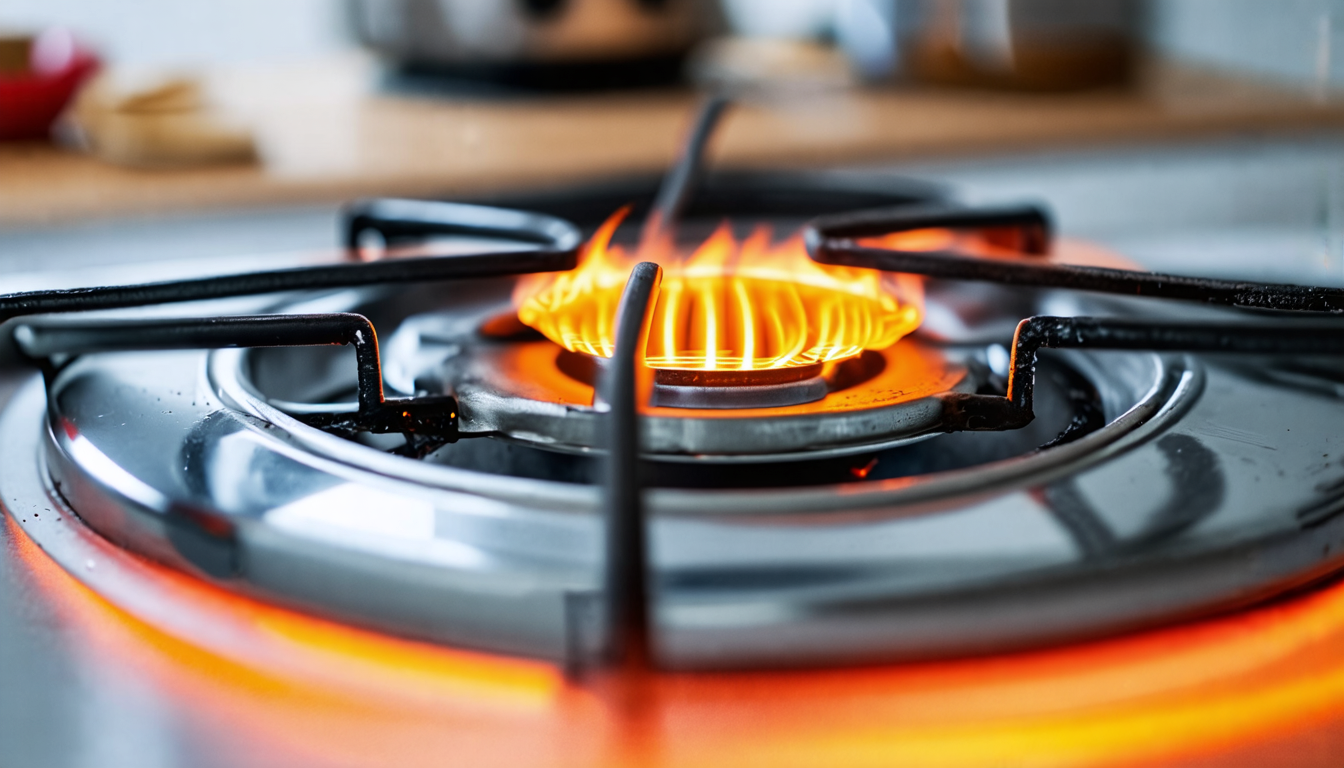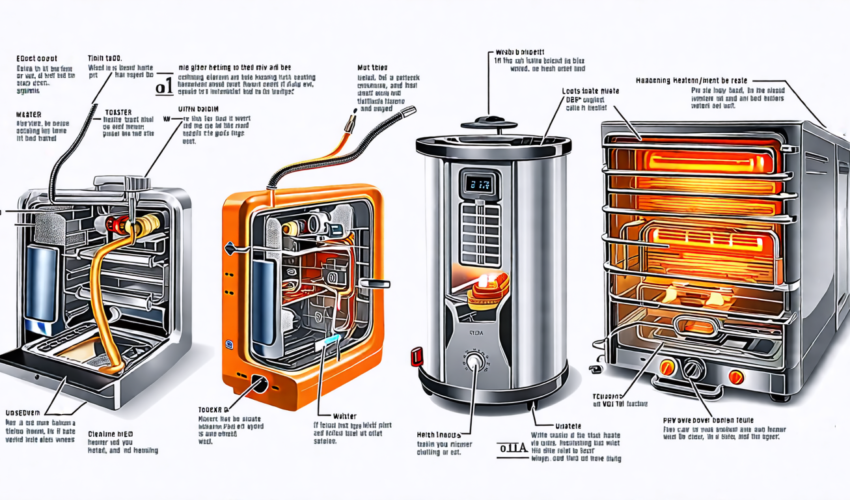A heating element is a vital component in many household appliances, playing a crucial role in converting electrical energy into heat to perform essential functions. Found in a wide range of common appliances such as ovens, toasters, and water heaters, heating elements are indispensable for their ability to produce the necessary heat for cooking, warming, and heating. These components provide the essential function of generating thermal energy, which drives the overall performance and efficiency of the appliances they are part of. Understanding the role and function of a heating element is key to appreciating how these appliances work and maintaining their longevity. Heating elements work through the principle of electrical resistance, where electricity passes through a resistive material, resulting in heat production. They come in various forms, including metal coils, ceramic, and gas elements, each designed for specific uses based on their heat distribution properties and energy efficiency. As heating elements are integral to appliance operation, it is important to be aware of their maintenance and potential troubleshooting needs. Common issues such as burnouts or inefficiency can be mitigated with regular maintenance and basic troubleshooting. By ensuring the heating element functions smoothly, we maximize the performance and lifespan of the appliances they power, reaffirming their indispensable role in day-to-day tasks.
The term heating element might sound technical to some, but it refers to a fundamental component found in a wide array of household and industrial appliances. At its core, a heating element is a material or device that converts electrical energy into heat through the process of electrical resistance. The heat generated by these elements is then employed to perform tasks such as cooking, drying, or heating water.
Heating elements play a pivotal role in many common appliances. Some of the most recognizable include ovens, toasters, and water heaters. In ovens, heating elements are responsible for the baking and roasting functions by generating the necessary temperatures for cooking food. They are typically located at both the top and bottom of the oven to provide consistent heat distribution.
Toasters, another popular kitchen appliance, use heating elements to toast bread evenly. These elements are generally made of a nichrome wire that heats up quickly, providing the high temperatures needed to brown the bread surfaces precisely. Similarly, water heaters rely heavily on heating elements to swiftly raise water temperature for showers, baths, and sinks. The heating element in a water heater is often made of metal and directly immersed in water to transfer heat effectively.
Beyond these household staples, heating elements are also essential in appliances such as dryers, irons, and dishwashers. In clothes dryers, for instance, heating elements help evaporate moisture from the fabric, shortening the drying cycle and enhancing efficiency. Iron heating elements ensure that the appliance reaches and maintains the correct temperature to press garments effectively, while dishwashers depend on heating elements to heat water and aid in the drying process.
The significance of heating elements cannot be overstated when it comes to their functionality in these appliances. Without them, many of the modern conveniences we enjoy today would not be possible. Heating elements allow for precise control over temperature, which is crucial for both cooking appliances and home heating solutions. Their design enables them to deliver consistent results, whether they are tasked with boiling water for a quick cup of tea or baking a delicate souffle.
In addition to their primary function of heat generation, heating elements must also be designed with safety and energy efficiency in mind. Modern appliances often incorporate advanced materials and engineering to ensure that these elements are not only effective but also safe to operate and economically viable in terms of energy consumption. With the ongoing innovation in technology and materials science, heating elements continue to evolve, promising even greater efficiency and safety in future appliance designs.

How Heating Elements Work
Understanding how heating elements work is fundamental to grasping their crucial role in any appliance. At the heart of each heating element is the process of converting electrical energy into heat, a transformation primarily governed by the principles of electrical resistance and conduction. Essentially, when electric current passes through a conductor, it encounters resistance, and this resistance generates heat. This principle, known as Joule heating, is the backbone of how heating elements function across various appliances.
The physics behind heating elements is rooted in this property of electrical resistance. When a current flows through a material with resistance, such as a metal wire, energy is lost in the form of heat due to the collisions of charge carriers—usually electrons—with the atoms in the conductor. The level of heating achieved is directly proportional to the square of the current, the resistance, and the time the current is applied (as defined by the equation P=I²R, where P is power, I is current, and R is resistance). This means that by adjusting the material’s resistance and the current flow, a heating element can be designed to deliver specific heat outputs, depending on the appliance’s requirements.
Different types of heating elements are employed based on the application and the desired heating characteristics. Metal coil heating elements are among the most widely used, often seen in appliances like toasters and ovens. These elements are typically made of nichrome, a nickel-chromium alloy known for its high resistance and resilience even at elevated temperatures. Nichrome is particularly favored because it doesn’t oxidize, which ensures a longer lifespan compared to other metals.
Another popular type is the ceramic heating element. These are frequently utilized in appliances such as hair dryers and space heaters. Unlike metal coil elements, ceramic heating elements are insulated and can distribute heat evenly over a surface. They work by using ceramic plates or other non-metallic structures, which conduct heat with remarkable efficiency. The advantage of ceramic elements is their ability to maintain consistent temperatures without overheating, making them a preferred choice for many home heating appliances.
Gas heating elements, on the other hand, operate by combusting a fuel source like natural gas or propane. This type of heater is prevalent in ovens and grills. While the basic principle differs as it involves combustion rather than electrical conduction, gas heating elements still follow a concept of energy conversion – in this case, chemical energy into heat. Gas elements are known for providing instant and adjustable temperatures, which is vital in applications where precise heat control is necessary.
To illustrate how these elements convert electrical energy into heat in practical settings, consider a water heater with an electric heating element. Here, the element, typically a coil submerged in the water, heats up due to resistance when electricity flows through it. The heat produced is directly transferred to the surrounding water, gradually raising its temperature. The efficiency of this process is enhanced by the close contact between the water and the heating coil, which allows heat transfer with minimal loss.
Similarly, in electric ovens, the heating elements are usually positioned at the top and bottom, delivering heat evenly throughout the cavity. When activated, these elements glow red-hot and radiate heat, effectively raising the oven’s ambient temperature. This radiant heat is then absorbed by food, leading to efficient cooking. Ovens usually allow for precise control over temperature and heating patterns, a feature made possible by the versatility of the heating elements involved.
In space heaters, the heating elements, whether metal or ceramic, function to rapidly raise the temperature of the air around them. Fans are sometimes used in conjunction with these elements to distribute the warm air more evenly throughout a space. This combination of resistance-generated heat and active air circulation ensures quick and uniform warming, which is ideal for comfort in household environments.
Understanding the mechanics and materials behind heating elements is essential not only for appreciating their role but also for selecting the right type of heating element for specific applications. Each type of element – be it metal, ceramic, or gas – brings unique advantages to the appliances they power, ensuring efficiency, reliability, and safety in everyday use.

Maintenance and Troubleshooting of Heating Elements
Heating elements are crucial components in many household and industrial appliances, ensuring optimal performance. Unfortunately, like any mechanical part, they are subject to wear and tear, which can lead to various issues over time. By understanding common problems and implementing routine upkeep, you can enhance the longevity and efficiency of your appliance’s heating element.
Common Issues with Heating Elements
Several issues frequently occur with heating elements, often related to their constant exposure to heat and electrical current. One of the most prevalent problems is burnouts, where the element stops functioning entirely due to a broken circuit. This can happen if the element is subjected to higher-than-normal voltages or if it has suffered from prolonged overheating.
Another typical issue is inefficiency, where the heating element doesn’t produce as much heat as it used to. This can be caused by a buildup of residue on the element or internal corrosion over time. Inefficient heating not only prolongs heating times but can also lead to increased energy costs.
Tips for Routine Maintenance
Proactive maintenance is key to extending the lifespan of a heating element. Here are some valuable tips:
- Regular Cleaning: Periodically clean the appliance to prevent any buildup of dirt or substances that could negatively affect the heating element. For example, in ovens, regularly remove any food residue that may cause blockages or burning.
- Inspect for Physical Damage: Occasionally check the heating element for any signs of damage, such as cracks, deformation, or discoloration. Detecting issues early on can prevent further damage.
- Ensure Proper Ventilation: Ensure enough airflow around the heating element to prevent it from overheating. In appliances like toasters and space heaters, obstructions can lead to overheating and frequent burnout.
- Use Correct Power Supply: Always use the recommended power supply for your appliance to avoid excessive strain on the heating element.
Basic Troubleshooting Steps
When faced with a malfunctioning heating element, a structured approach to troubleshooting can save time and expenses. Here are some basic steps to follow:
- Check Power Source: Ensure that the appliance is plugged in correctly and that its circuit is receiving power. A weak or interrupted power supply is a common cause of heating element issues.
- Examine the Element: Visually inspect the heating element for any obstructions or damage. A broken or fractured element will need to be replaced, while a dirty element may just need cleaning.
- Test Continuity: Use a multimeter to test the electrical continuity of the heating element. If the multimeter indicates no continuity, the element itself is likely failing and needs to be replaced.
- Consult Manual: Refer to the appliance’s user manual for specific guidelines related to the heating element. Manuals often contain manufacturer-specific advice for maintaining and troubleshooting their products.
- Seek Professional Help: If issues persist after following the troubleshooting steps, it may be necessary to contact a professional technician for repair or replacement.
In summary, while heating elements are robust components of appliances, they require some level of routine care to function efficiently over time. By being aware of common issues and taking preventive maintenance steps, you can help ensure that your heating elements continue to work effectively, providing the consistent heat output you rely on.
In conclusion, heating elements are essential components that play a critical role in the functionality of a wide range of household and industrial appliances. These elements serve as the backbone of devices such as ovens, toasters, and water heaters, facilitating the conversion of electrical energy into the heat necessary for their operation. Understanding the science behind heating elements sheds light on the fundamental principles of electricity and resistance. Various types, including metal coils, ceramic, and gas elements, are designed to meet specific heating needs across different applications, showcasing the versatility of heating element technology.
To ensure the optimal performance and longevity of heating elements, regular maintenance is vital. Addressing common issues such as burnouts and inefficiencies promptly can help prevent more significant problems. Implementing basic care routines, such as checking for signs of wear and ensuring proper electrical connections, not only extends the lifespan of these components but also maintains the safety and efficiency of the appliances.
Moreover, developing skills in troubleshooting can empower users to resolve minor issues on their own, thereby reducing downtime and the need for professional repairs. Understanding the symptoms of a failing heating element, such as uneven heating or complete failure to generate heat, is critical for timely intervention. Overall, a well-maintained heating element ensures that appliances perform reliably, efficiently, and safely, underscoring the importance of this often-overlooked component in our daily lives.

